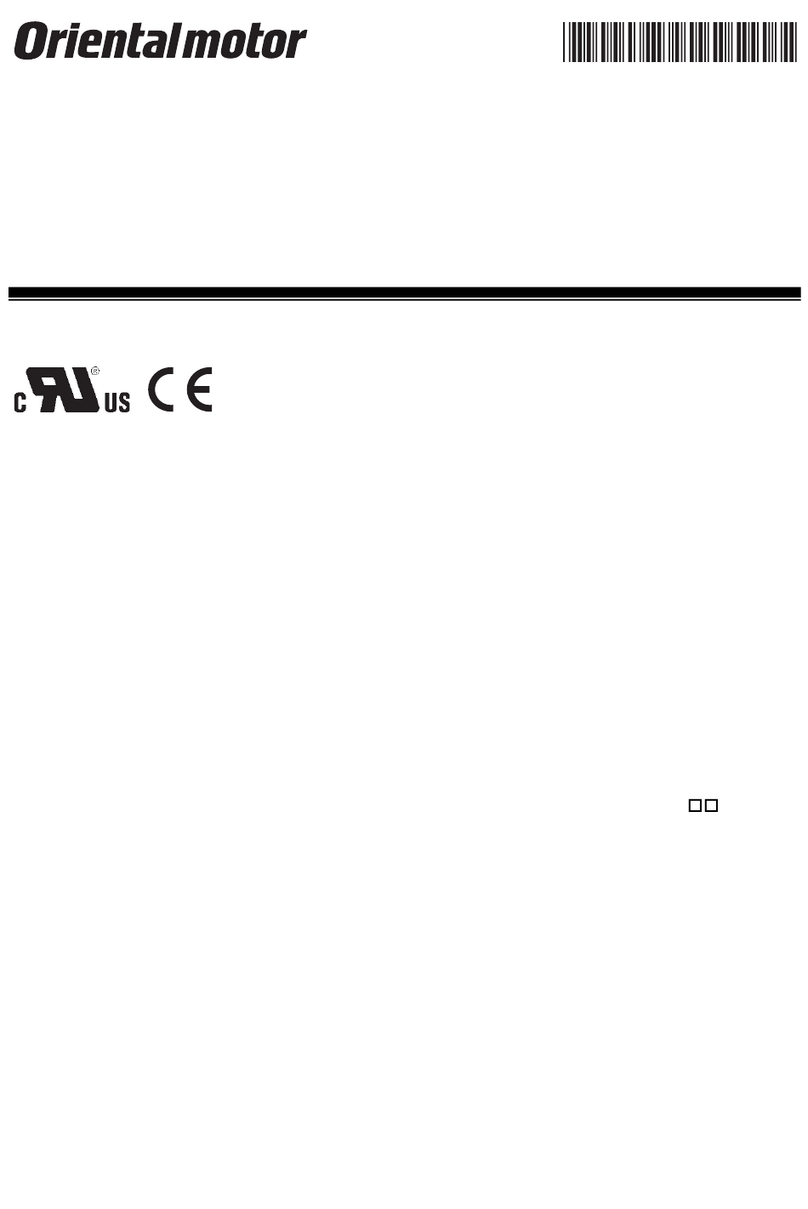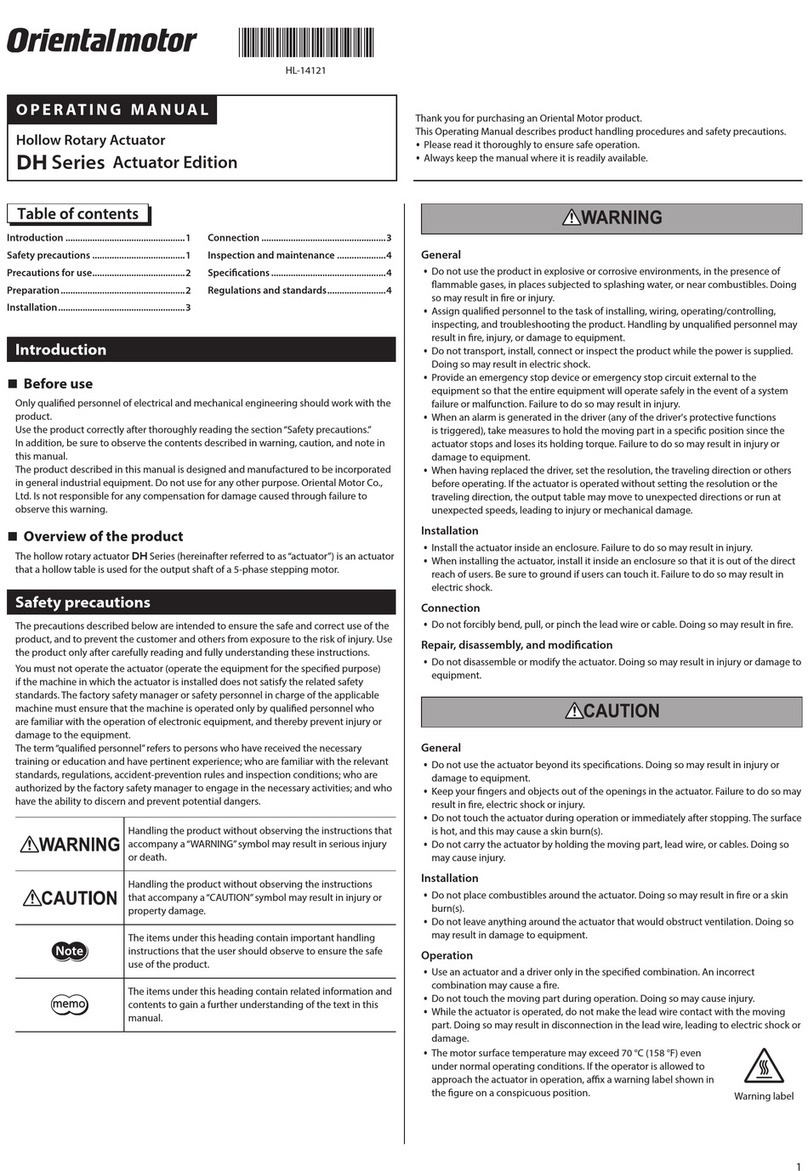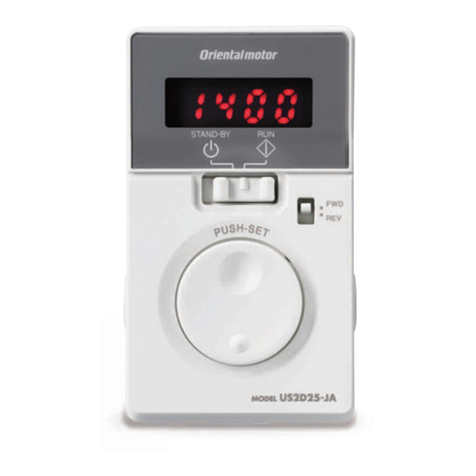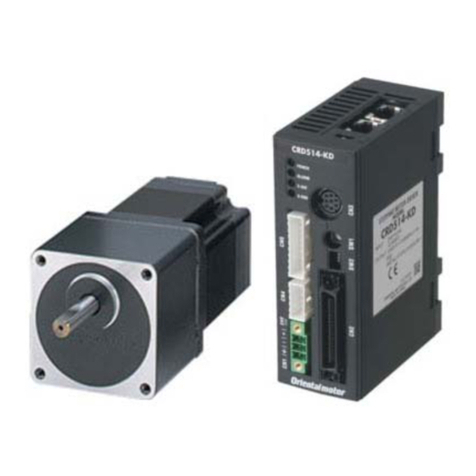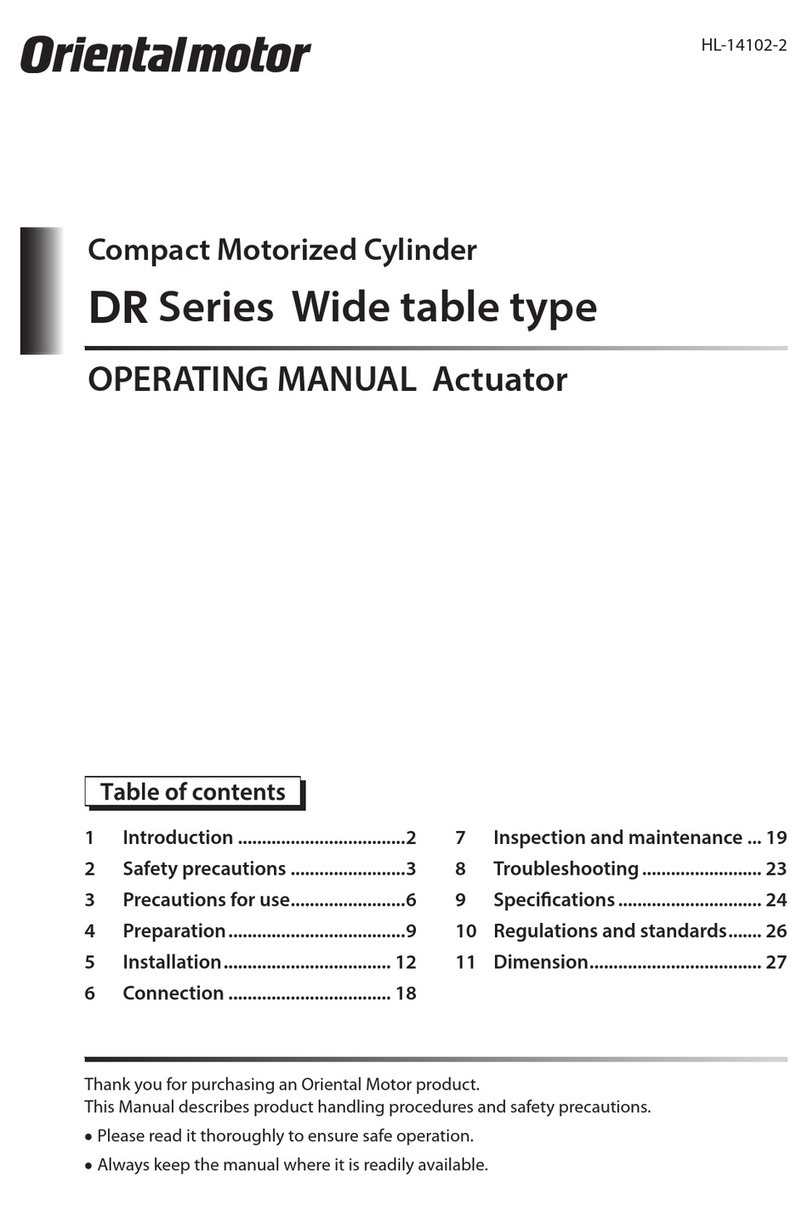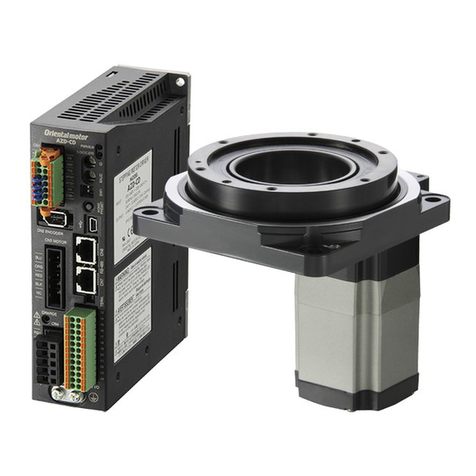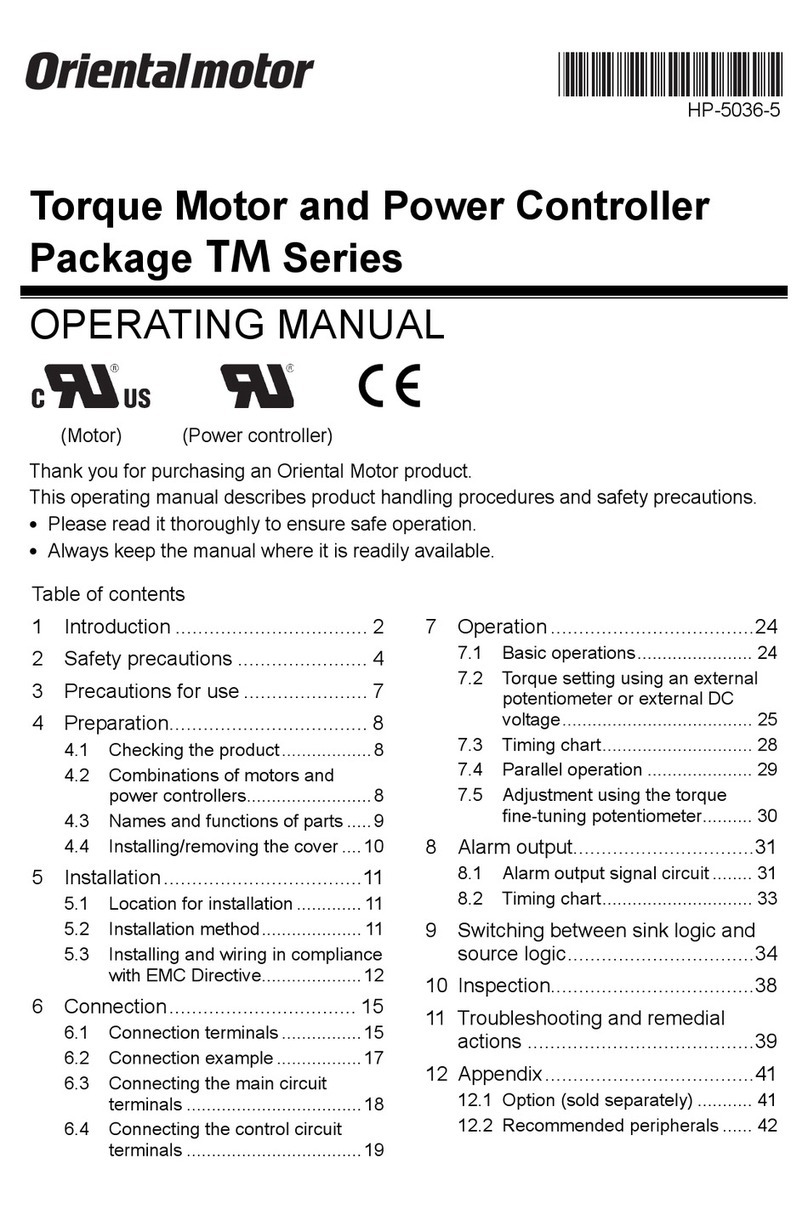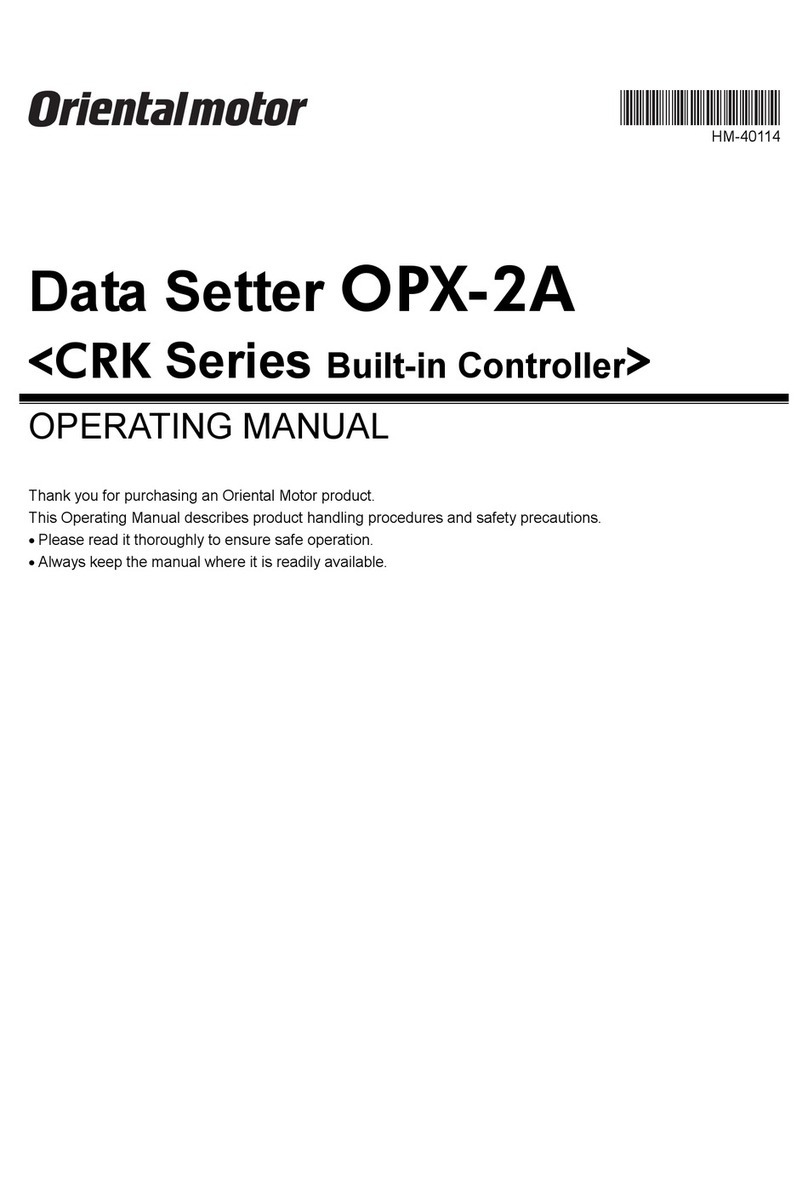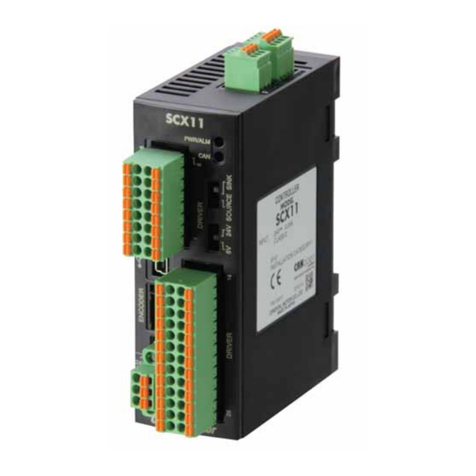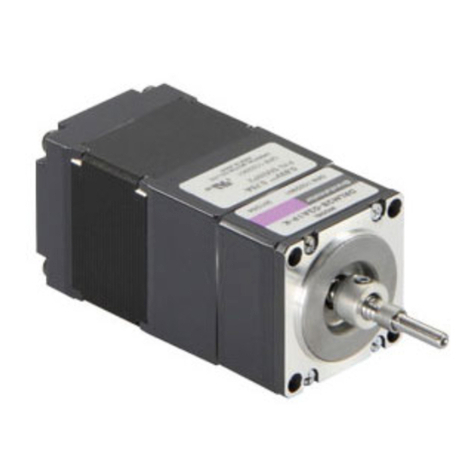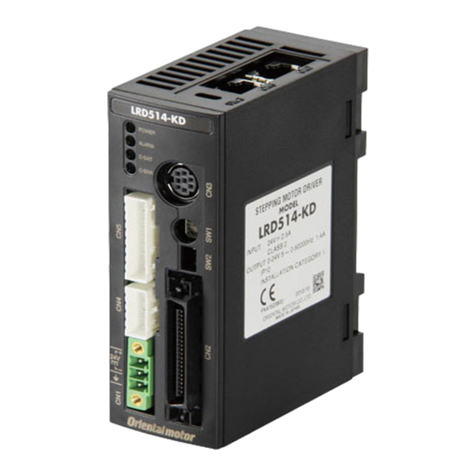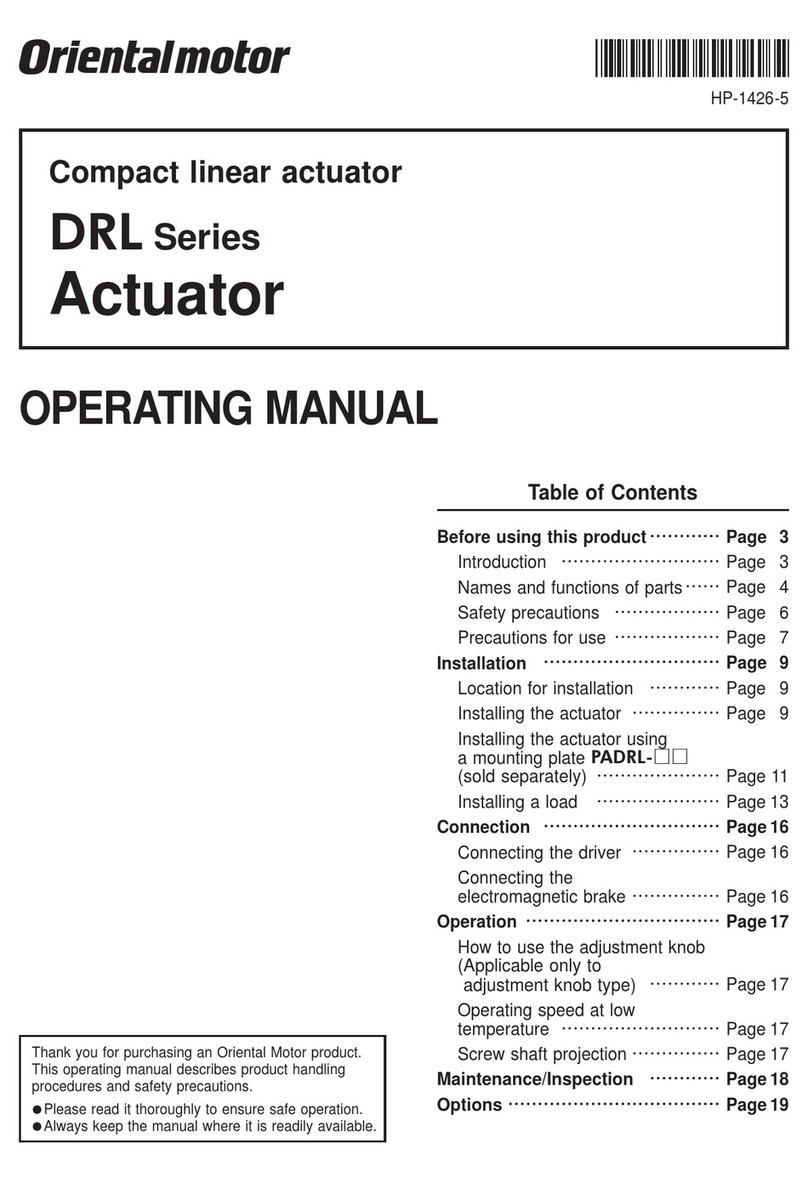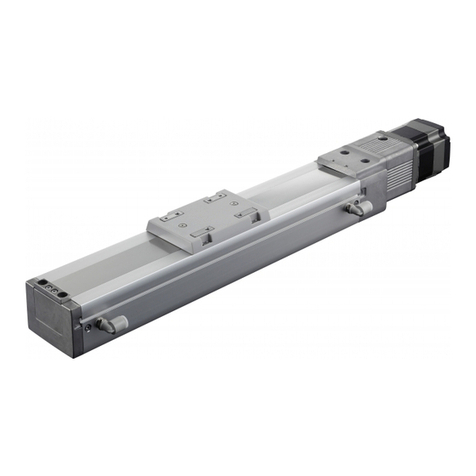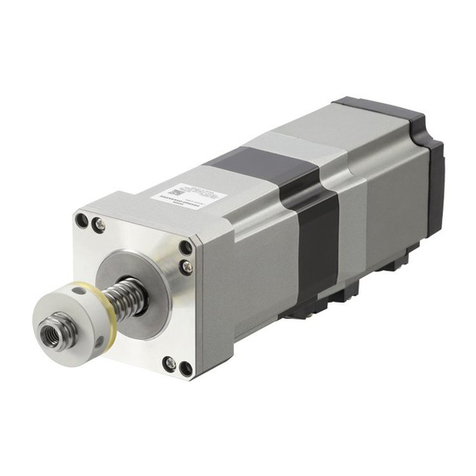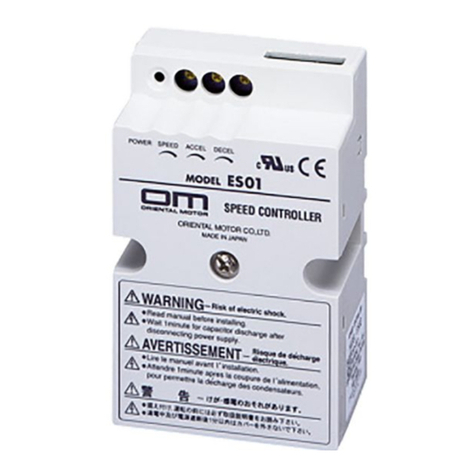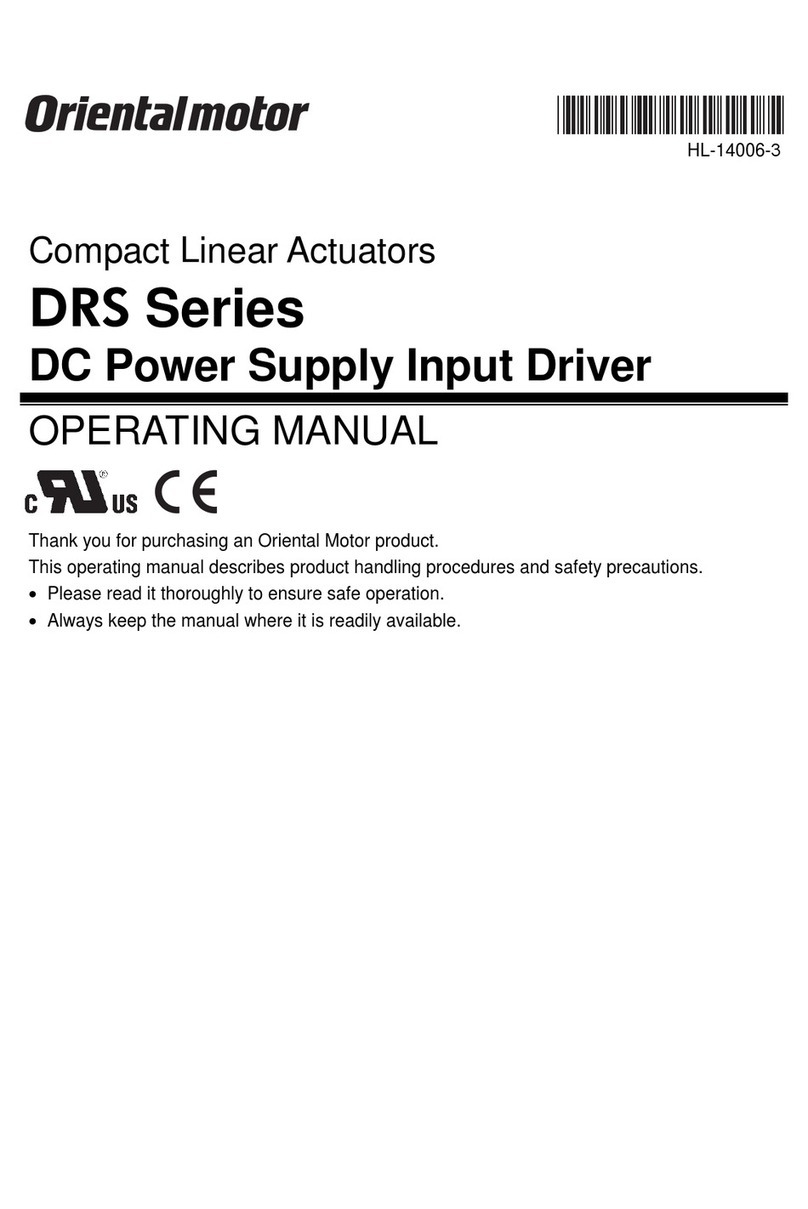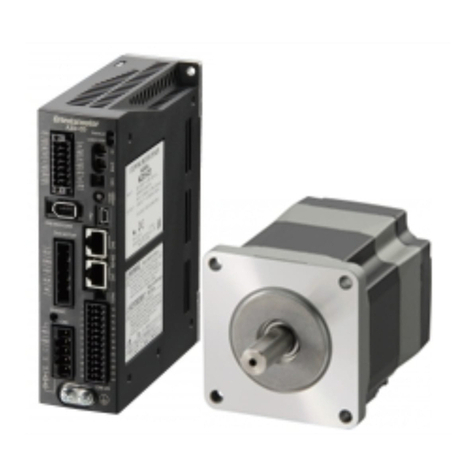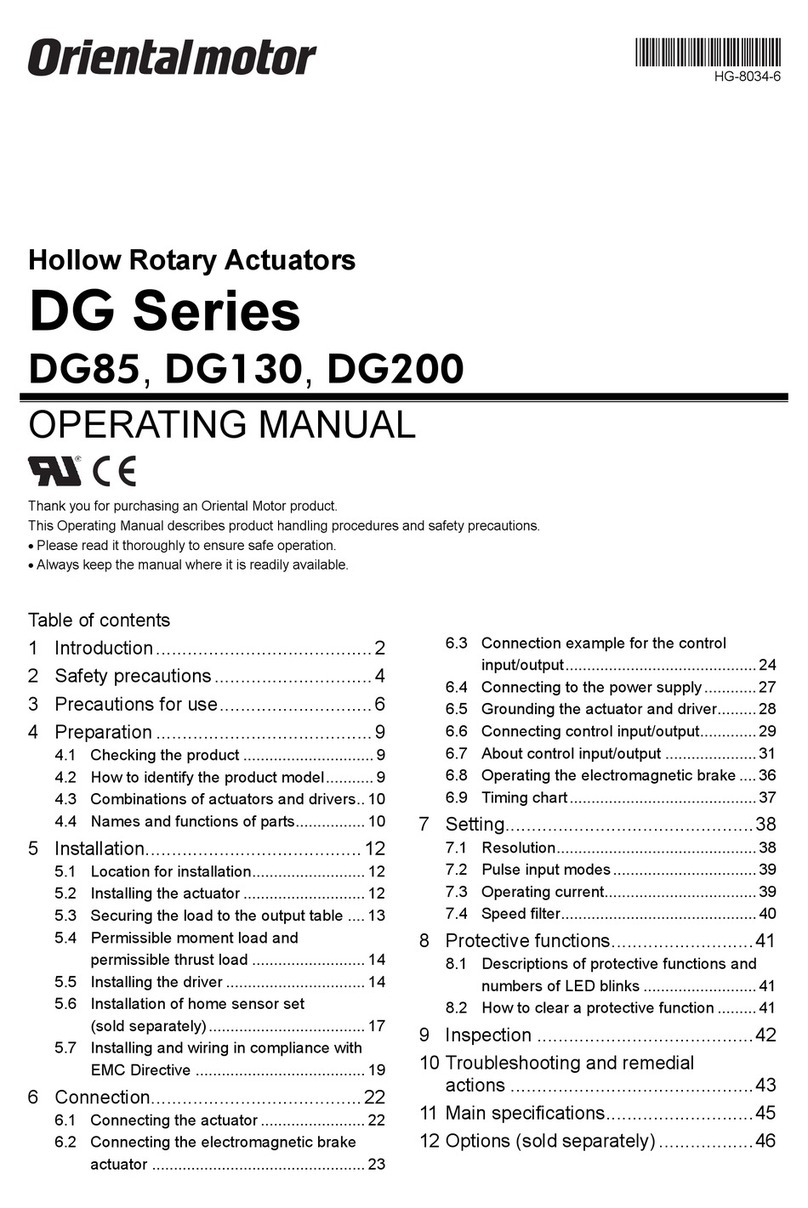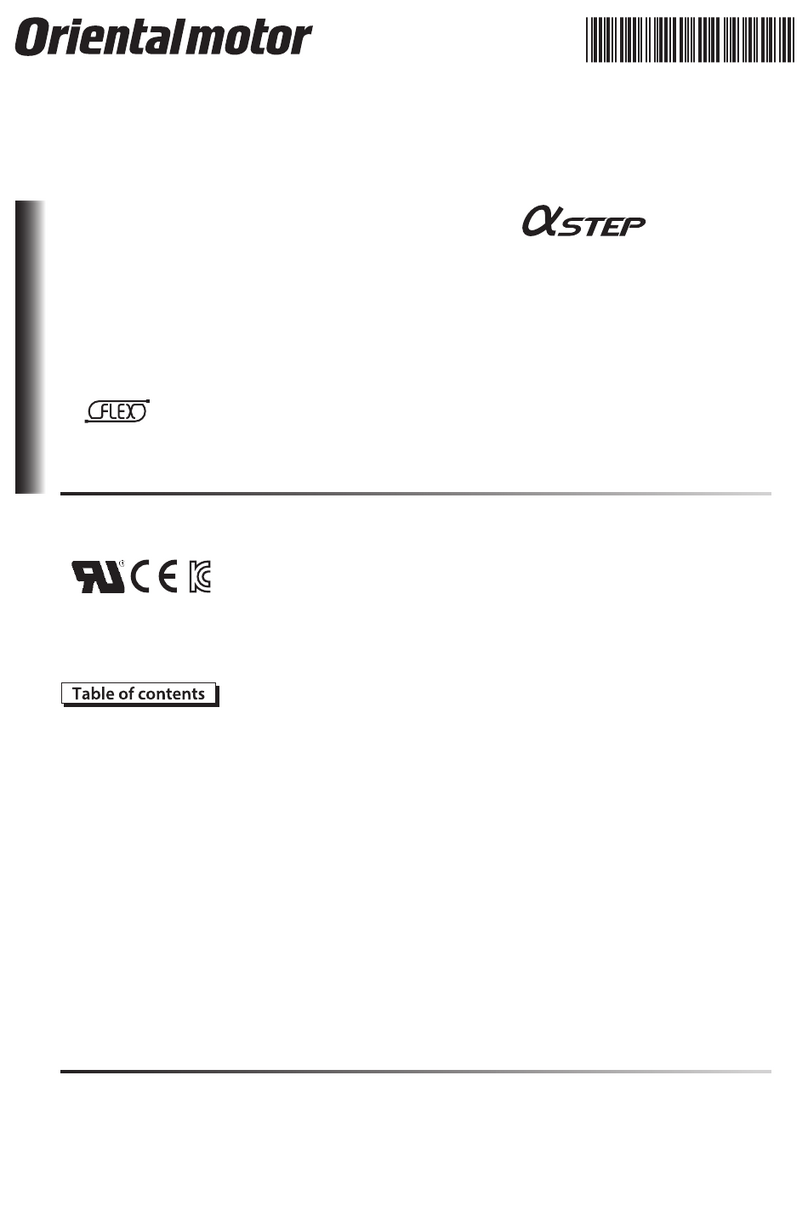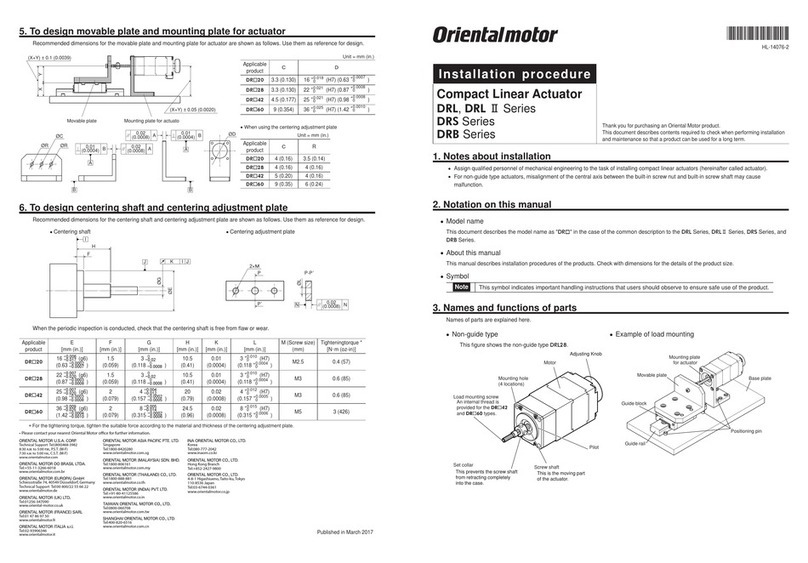
Safety precautions
−4−
2 Safety precautions
The precautions described below are intended to prevent danger or injury to the user and other personnel through safe,
correct use of the product. Use the product only after carefully reading and fully understanding these instructions.
Handling the product without observing the instructions that accompany a “Warning” symbol may result in
serious injury or death.
General
•Do not use the product in explosive or corrosive environments, in
the presence of ammable gases, locations subjected to splashing
water, or near combustibles. Doing so may result in re, electric
shock or injury.
•Only qualied and educated personnel should be allowed to perform
installation, connection, operation and inspection/troubleshooting of
the product. Handling by unqualied and uneducated personnel may
result in re, electric shock, or injury.
•Do not transport, install, connect or inspect the product while the
power is supplied. Always turn the power off before carrying out
these operations. Failure to do so may result in electric shock.
•The terminals on the speed controller front panel marked with
symbol indicate the presence of high voltage. Do not touch
the CN1 and CN3 while the power is ON. Doing so may result in
re or electric shock.
Installation
•The motor is ClassⅠ equipment.
When installing the motor, ground the Protective Earth Terminal of
the motor. Failure to do so may result in electric shock.
•Install the motor and speed controller in an enclosure. Failure to do
so may result in electric shock or injury.
Connection
•For the AC power supply voltage of the speed controller, use the
same power supply voltage as the motor specication. Failure to do
so may result in re or damage to equipment.
•The speed controller has no built-in fuse for overcurrent protection.
Be sure to connect a device for fuse in the power input line. Failure
to do so may result in re.
•Securely connect and ground in accordance with the connection
examples. Failure to do so may result in re or electric shock.
•Do not forcibly bend, pull or pinch the cable. Doing so may cause
re or electric shock.
•Be sure to observe the specied cable sizes. Use of unspecied cable
sizes may result in re.
•Insulate the connection terminals of the supplied capacitor using the
supplied capacitor cap. Failure to do so may result in electric shock.
Maintenance and inspection
•Do not touch the connector of the speed controller immediately
after the power is turned off (for a period of 1 minute). The residual
voltage may cause electric shock.
Disassembly and modication
•Do not disassemble or modify the motor and speed controller.
This may cause electric shock or injury.
Handling the product without observing the instructions that accompany a “Caution” symbol may result in
injury or property damage.
General
•Do not use the motor and speed controller beyond their
specications. Doing so may result in electric shock, injury or
damage to equipment.
•Do not carry the motor by holding the motor output shaft or motor
cable. Doing so may result in injury.
•If an alarm of the speed controller is generated, rst remove the
cause and then reset the alarm. Failure to do so may result in injury
or damage to equipment.
•Do not use the product in elevating applications (vertical drives).
Doing so may result in injury or damage to equipment.
Installation
•Keep the area around the motor and speed controller free of
combustible materials. Failure to do so may result in re or a skin
burn(s).
•Do not leave anything around the motor and speed controller that
would obstruct ventilation. Doing so may result in damage to
equipment.
•Securely install the motor and speed controller to the mounting plate
and DIN rail respectively. Inappropriate installation may cause the
motor and speed controller to detach and fall, resulting in injury or
equipment damage.
Connection
•Do not wire the electromagnetic contactor or power relay between
the motor and speed controller. To switch the rotation direction using
the electromagnetic contactor may cause damage to equipment.
•Be sure to ground the motor and speed controller to prevent them
from being damaged by static electricity. Failure to do so may result
in damage to equipment.
Operation
•Use a motor and speed controller only in the specied combination.
An incorrect combination may cause a re.
•Provide an emergency stop device or emergency stop circuit external
to the equipment so that the entire equipment will operate safely in
the event of a system failure or malfunction. Failure to do so may
result in injury.
•Immediately when trouble has occurred, stop running and turn
off the speed controller power. Failure to do so may result in re,
electrical shock or injury.
•Do not touch the rotating part (output shaft) while operating the
motor. Doing so may result in injury.
•The motor surface temperature may exceed 70 °C
(158 °F) even under normal operating conditions. If
the operator is allowed to approach a running motor,
attach a warning label as shown in the gure in a
conspicuous position. Failure to do so may result in
skin burn(s).
Warning label
Maintenance and inspection
•Conduct the insulation resistance measurement or dielectric strength
test separately on the motor and speed controller. Conducting while
the motor and speed controller are connected may result in damage
to equipment.
Disposal
•To dispose of the motor and speed controller, disassemble it into
parts and components as much as possible and dispose of individual
parts/components as industrial waste.
